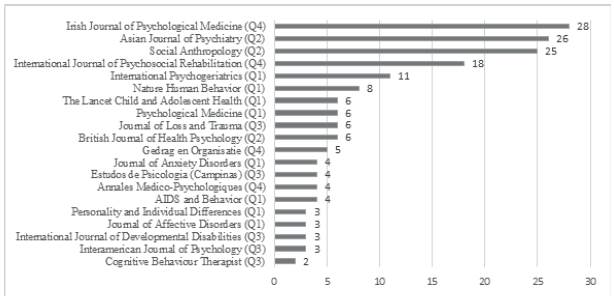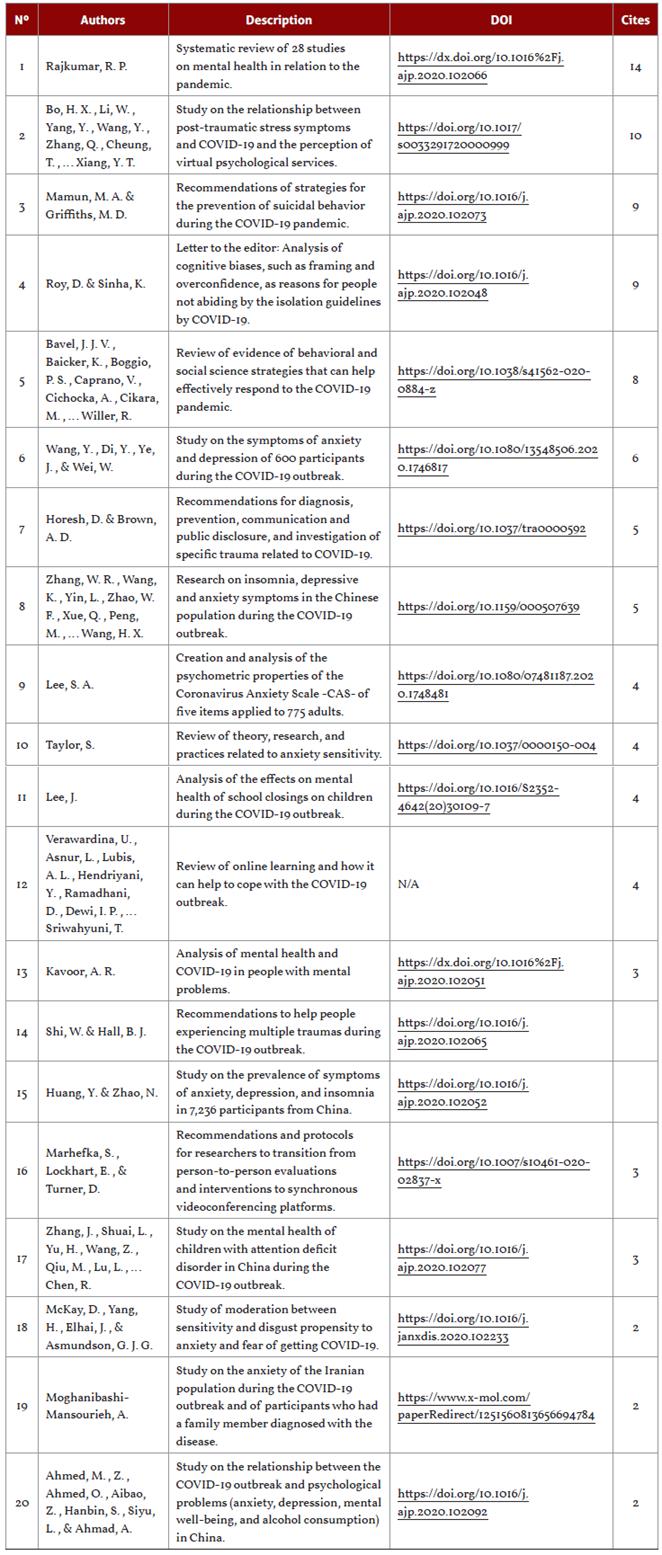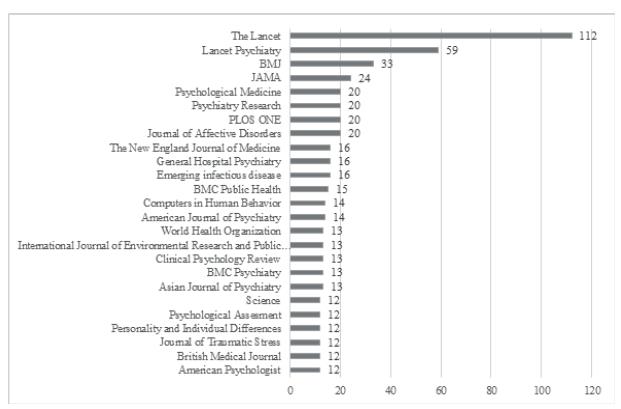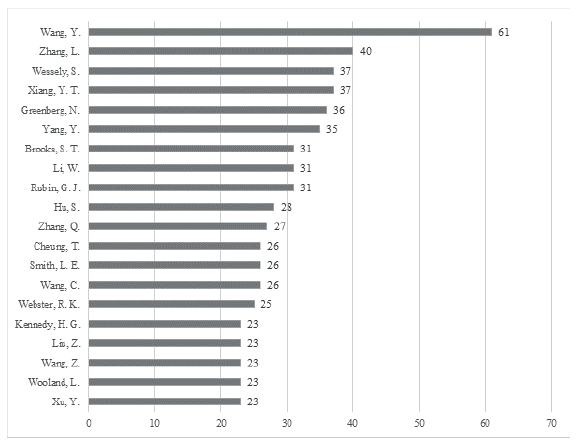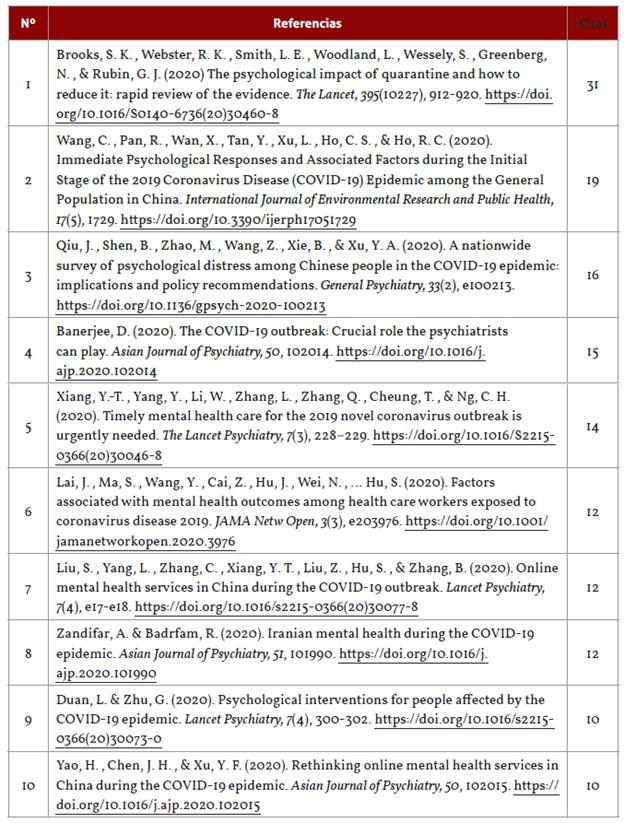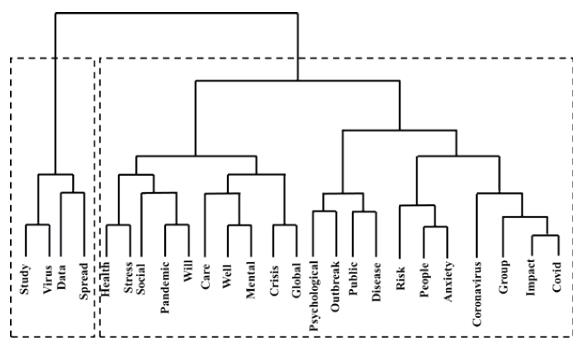Introduction
In Wuhan, China, in early December 2019, several cases of pneumonia were reported (Ren, et al. 2020). By January 2, 2020, 41 patients were laboratory diagnosed with COVID-19 infection (Huang, et al., 2020) that made this virus (SARS-CoV-2), according to the complete genome sequencing, the seventh member of the coronavirus family to infect humans (Wu, et al. , 2020). As of January 22, 2020, there were already 571 confirmed cases (Lu, 2020). Rapidly, the COVID-19 disease spread in various parts of the world through the air transport system and by March 12, the World Health Organization (WHO, 2020a), based on more than 20,000 infections in various regions of the world, characterized COVID-19 disease as a pandemic.
On the day this review was sent to the journal, June 30, 2020, the WHO based on laboratory tests counted a total of 10.321.689 cases of COVID-19 and 507.435 deaths around the world (WHO, 2020b). To combat a pandemic, individuals must engage in behaviours that can help prevent the spread of infections (Bish & Michie, 2010; Anderson, Heesterbeek, Klinkenberg, & Hollingsworth, 2020).
Indeed, Governments around the world decided to close airports, declare quarantines, and request isolation and social distancing from their citizens, these strategies are proven to be effective in reducing and preventing the contagion of infectious diseases (Yan & Zou, 2008). Additionally, Governments have issued the guideline for use facemasks, among other recommendations, as more aspects of the symptoms and forms of transmission of COVID-19 became known, based on the WHO recommendations (WHO, 2020c).
However, such restrictions are ethically challenging (Wilder-Smith & Freedman, 2020) because several studies detailed the negative consequences of behaviour due to programmed isolation. Specifically, social isolation increases the risks of premature mortality (Valtorta, Kanaan, Gilbody, Ronzi, & Hanratty, 2016; Alcaraz, et al., 2019), depressive symptomatology (Ge, Yap, Ong, & Heng, 2017), post-traumatic stress symptoms and aggressive behaviours (Zelikowski, et al. , 2018). Furthermore, social isolation increases feelings of loneliness that can harm overall health (Tiwari, 2013; Cole, et al., 2015; Leigh-Hunt, et al. 2017; Cacioppo & Cacioppo, 2018) and causes twice as much physical and psychological harm as smoking or obesity (Holt-Lunstad, Smith, Baker, Harris, & Stephenson, 2015; Hawkley & Capitanio, 2015).
Additionally, these negative effects could appear on weekends and during holiday's periods (which can be generalized to periods such as imposed quarantines and predict even stronger effects). Perhaps, as it is closely related to time spent at a computer or internet that can cause people to experience poor sleep quality (Liu, et al., 2017), changes in physical activity and changes in sleep routines which can result in weight gain, and loss of respiratory fitness (Brazendale, et al., 2017; G. Wang, et al., 2019).
Notwithstanding the negative consequences of social isolation, this turns out to be a mandatory measure to prevent massive contagion and a possible increase in deaths in a pandemic situation (Glass, Glass, Beyeler, & Min, 2006; Chen, Yang, Yang, Wang, & Barnighausen, 2020; Mowbray, 2020). Researchers have suggested that to minimize the negative consequences individuals must obtain clear information about the disease from reliable sources that indicate the reason for distancing and social isolation.
Other recommendations to reduce feelings of loneliness suggest that individuals should be in contact with others remotely (Brooks, et al., 2020), to do physical activity, to have a balanced diet, to establish routines of sleep and promote a hygiene routine, especially in children (Mason, et al., 2018) and participate in crisis mental health interventions (Liu, et al., 2020). Even, to take a hot shower may reduce feelings of loneliness (Bargh & Shalev, 2012) or just walking and cycling could maintain satisfactory levels of well-being and health (De Vos, 2020).
Nevertheless, individuals can be reluctant to engage in such behaviours and behave in unusual ways such as hoarding or panic buying (Mahase, 2020; Garfin, Silver, & Holman, 2020), may incur self-medication (Mowbray, 2020), or self-medicate with disinfectants that could cause several health damages (Lopez-Canon & Perez-Acosta, 2020).
Consequently, researchers in psychology have generated various alliances and international calls (Palmer, 2020) to inquire about what could they do to minimize the effects of confinement and social distancing (see, for example, Arden & Chilcot, 2020; Dorison, et al., 2020; Forscher, Primbs, & Coles, 2020; K. Wang, et al. , 2020).
To know what studies have carried out in psychology related to the COVID-19 disease and its effects, we performed a bibliometric of the publications in the first semester of 2020. Specifically, we established the following objectives to contribute to identifying the published articles related to the pandemic in psychological journals; identifying which articles have cited the most; to identify the most cited references, authors, and journals; and to explore the conceptual structure of the articles retrieved.
Method
Design
This work consisted of a bibliometric study that, according to Aria and Cuccurullo (2017), is useful to know the evolution of a topic or area of science from the quantification of the bibliometric information of the scientific production that allows identifying the most relevant authors, the most studied topics, research trends, the most used keywords, among other characteristics.
Search procedure
On June 12, 2020, in the SCOPUS database, we retrieved the bibliometric information of all the articles published during 2020 in Psychology. The topic is composed of the following subareas according to the SCOPUS classification: applied psychology, clinical psychology, psychology experimental and educational, experimental, and cognitive psychology, general psychology, neuropsychology and physiological psychology, psychology (miscellaneous) and social psychology. This subarea has the contribution of 1462 scientific journals. Specifically, we generated the following advanced search in SCOPUS with the following keywords and only texts published in the year 2020 in Psychology, without considering reviews:
SUBJAREA (psyc) AND TITLE-ABS-KEY (coronavirus OR covid-19 OR "novel coro-navirus" OR "SARS nCoV" OR "2019 nCoV" OR "Wuhan coronavirus" OR "Wuhan pneumonia" OR "SARS-CoV-2") AND DOCTYPE (ar) AND PUBYEAR > 2019
We retrieved the bibliographic information from 223 published articles, which we downloaded in the BibTeX format. On the following page, readers will be able to find the downloaded raw data so that they can reproduce the results found: https://osf.io/gz9qa/.
Data analysis
Based on descriptive statistical analysis and data visualization techniques set in R, we analyzed the data exported in BibTeX in the "bibliometrix" version 3.0 package developed by Aria and Cuccurullo (2017). This package allows bibliometric analysis performed in the "biblioshiny" interface. Besides, in different areas of knowledge, this package has been used (see, for example, Alonso, Castiello, & Mencar, 2018; Anglada-Tort & Sanfilippo, 2019; Almeida & de Paula, 2019; Aria, Misurca, & Spano 2020).
Results
We found 223 documents published in 61 journals that contained 5,333 references, 418 authors' keywords and 574 keywords plus. Besides, we found that 62 articles had a sole author, and the average number of authors per article was 4.
Figure 1 shows the 20 journals where most articles have published according to this review during the pandemic. The Irish Journal of Psychological Medicine published 28 articles related to COVID-19. Next to the title in parentheses is the quartile of each journal based on the 2019 SCOPUS ranking (https://www.sdma-gojr.com/).
Additionally, we examined the frequency of citation of the articles until June 12, 2020. Table 1 shows the first 20 articles with the highest citation with their respective DOI number and a brief description of the articles. These articles focus on the effects of COVID-19 on mental health and most of them were made in China.
In figure 2, the most cited journals in the 5,333 references of the documents extracted with a cutoff of 12 occurrences. The most referenced magazine is The Lancet with 112 articles, followed by Lancet Psychiatry with 59 papers.
After, we explored which authors were the most cited in the references. In this sense, we found that the most cited authors were Wang, Y. (61) and Zhang, L. (40) as evidenced in figure 3. Although, we noted that there is not necessarily a relationship with the order of the most frequent references cited because the authors appear in different studies.
Moreover, we explored which were the 10 most common references among the 223 articles. We found that Brooks, et al. (2015) and de Wang, et al. (2020) were the references most cited (See table 2) with a cutoff of 10 occurrences. Results showed that most of these studies were conducted in China.
Furthermore, we analyzed the conceptual structure of the documents based on their titles, abstracts, authors’ keywords, and keywords plus. The keywords plus are similar to the authors’ keywords (Garfield & Sher, 1993). However, they are generated automatically by an algorithm of the database that helps in bibliometric analyzes to understand the conceptual structure of a bibliometric data set although it does not necessarily represent the content of articles (Zhang, et al. 2016).
As a result, we merge the analysis of the four mentioned characteristics to have a better understanding of the downloaded documents (Figure 4). The size of the words indicates the frequency of occurrences in the articles consulted. For instance, in the titles, the word “COVID” was the one that had the most appearances in 181 papers, in the abstracts the word “COVID” had 340 appearances, and so on. We noticed that the algorithm of the plus keywords categorized several of these articles as “priority journal” and most of the words are related to the impact of the pandemic on mental health.
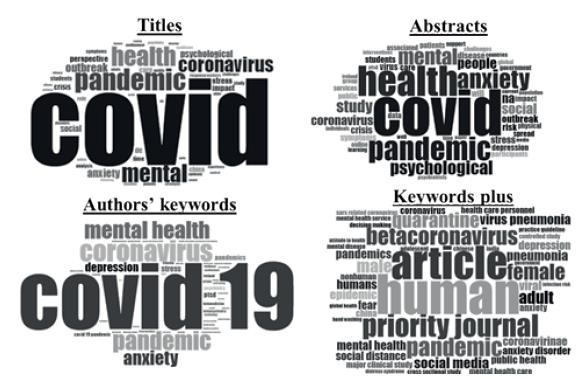
Figure 4 Frequency of words in titles, abstracts, authors’ keywords, and keywords plus of the. articles downloaded from SCOPUS
Besides, we performed a text mining factor analysis of the words in the abstracts using multiple correspondence analysis methods to explore the concep tual structure of the published documents. This mapping strategy displays the structural and dynamic aspects of scientific research. Figure 5 shows the two factors. The first of them represents related articles that allude to COVID-19 and the reporting of disease data. The second factor represents studies related to the psychological effects of COVID-19 pandemic.
Discussion
The purpose of this article was to carry out a bibliometric analysis of the production of psychological science concerning the COVID-19 pandemic. With the analysis of the bibliometric information of the articles published from January to June 12, 2020, in the SCOPUS database in the area of psychology, it allowed us to contribute to future studies to identify authors, documents and journals that have prioritized the publication of articles related to COVID-19.
Additionally, we illustrate the advantages of using computational bibliometrics set in R (Aria & Cucurrullo, 2017). Likewise, we share the data in an open science repository to contribute and stimulate the replicability of the results of this study and the psychological science (Open Science Collaboration, 2015).
Regarding the results found, we could observe an interest by the scientific community and the journals in psychology to publish quickly on topics related to the current pandemic. Many of the studies show an interest in the effects on the mental health of distancing and social isolation, specifically in anxiety and depression (see Bo, Li, Yang, & Wang, 2020; Y. Wang, et al. 2020).
However, we noticed a lack of studies related to social psychology, educational psychology, consumer psychology and other areas that could help to understand human behaviour in a pandemic situation. For instance, some researchers are working hard to understand if framing messages in terms of gains (e.g. “you can stay healthy if you use a mask”) can persuade people to adopt protective health behaviours, as social distancing, more than loss framing messages (e.g. “you have much to lose and danger others if you don’t use a mask”), typically, in media this kind of messages are used (Dorinson, et al. , 2020).
Other studies, after this bibliometric analysis, have found that people with high sensitivity to pathogen disgust tend to give lower judgements of trustworthiness and higher perceptions of illness of others that use a surgical mask (Olivera-La Rosa, Chuquichambi, & Ingram, 2020). Other studies have focused their attention to COVID related to conspiracy theory beliefs and its relation to negative attitudes toward government responses (Georgiou, Delfabbro, & Balzan, 2020); youth’s motivation to engage to social distancing (Oosterhoff, Palmer, Wilson, & Shook, 2020), and other topics.
Besides, journals currently have called for rapid and regular reviews encouraging researchers to publish papers (empirical and reviews) related to COVID-19 and diverse areas of psychological and behavioural sciences (see APA journals, Taylor & Francis Journals, Wiley journals, and others).
Regarding the limitations of this study, in our analysis, we could not explore the social and intellectual structures of these documents (collaboration network and co-citation network respectively) because there was not enough data to conduct these analyses. Moreover, data retrieved is limited to the search strategy (keywords used).
Finally, we suggest to carry out bibliometric studies regarding the publications related to COVID-19 focused on behavioural sciences and other scientific disciplines that seek to conduct interventions or studies for avoiding the transmission of COVID-19 (for instance, Arden & Chilcot, 2020; Dorison, et al. , 2020; Forscher et al. , 2020; K. Wang, et al. , 2020). Likewise, future research should explore the effects of the pandemic on academic performance, work stress, work performance, marital satisfaction, sexual behaviour, and other phenomena.














